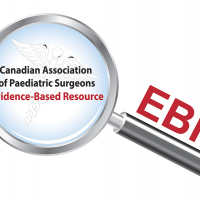
NEW YORK (Reuters Health) - Ad libitum early feeding after pyloromyotomy for hypertrophic pyloric stenosis is associated with shorter hospital stays than structured and delayed feeding, according to a meta-analysis of 14 studies.
"Hypertrophic pyloric stenosis is common, and there is clinical practice variation among surgeons when it comes to postoperative feeding," Dr. Ahmed Nasr, from Children's Hospital of Eastern Ontario, Ottawa, Ontario, Canada, told Reuters Health by email. "In times of health cost constraint we should be adopting the most cost-effective methods without harming patients. The rapid feeding would lead to a decrease in length of hospital stay without bad outcomes or readmissions."
Early feeding has been championed recently as a way to accelerate hospital discharge, but delayed feeding and gradual advancement of feeding have been advocated because normal gastric peristalsis does not return until 24 hours post-pyloromyotomy.
Dr. Nasr and colleagues, on behalf of the Canadian Association of Paediatric Surgeons Evidence-Based Resource, performed a systematic review and meta-analysis to evaluate the effect of feeding regimens post- pyloromyotomy on postoperative emesis, length of stay (LOS), and other relevant clinical outcomes.
Altogether, the 14 studies involved more than 2100 infants.
Six studies that reported on LOS for ad libitum versus structured feeding showed that ad libitum feeding shortened LOS by an average 4.66 days (p=0.01).
Four studies showed that early feeding versus late feeding reduced LOS by an average 12.07 days, but the difference was not statistically significant.
Rapid feeding versus gradual feeding reduced LOS by an average 22.05 days (p=0.03), according to the
December 30 Pediatrics online report.
Among secondary outcomes, early feeding nearly tripled the risk of postoperative emesis (compared with delayed feeding), whereas gradual feeding reduced the odds of emesis by 64% and the number of episodes of emesis per patient by 1.7 episodes (compared with rapid feeding).
Postoperative emesis did not differ significantly between ad libitum and structured feeding.
The feeding regimens did not differ significantly in postoperative complications, emesis after discharge, or hospital readmissions.
"Ad libitum feeding is recommended for patients after pyloromyotomy as it leads to decreased LOS," the researchers conclude. "If physicians still prefer structured feeding, early rapid feeds are recommended as they should lead to a reduced LOS."
"I hope that all surgeons would adopt the rapid feeding regimen for infant with pyloric stenosis postoperatively," Dr. Nasr said. "Discharging an infant earlier from hospital would save our resources to be directed toward other areas of need. Also, an earlier discharge would help families to go back to their normal life earlier and alleviate the stress among family members."
"Surgeons are slow to adopt best evidence when compared to medicine, and hopefully this article would help to overcome what I like to call hurdles against adopting best evidence and change practice," Dr. Nasr said. "This article will be cited at the Canadian Association of Pediatric Surgeons Evidence Based Resource website (caps.ca/evidence-based-resource), which will help with dissemination and then accepting and adopting of new evidence."
The review can be found here: http://www.ncbi.nlm.nih.gov/pubmed/26719292




